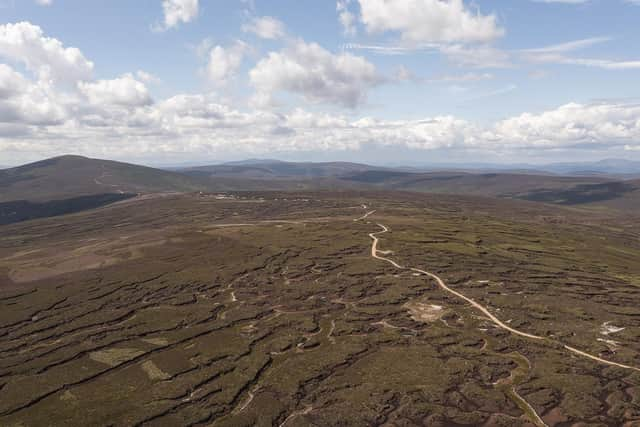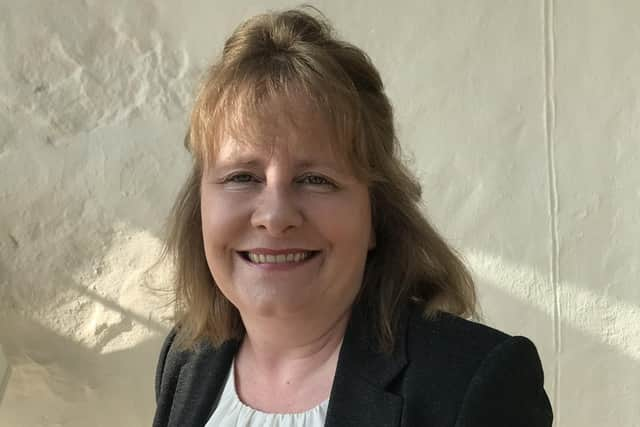Land Reform: How ‘lotting’ can benefit Scotland's rural communities
There are few people today, especially in rural Scotland, that can fail to be aware of the housing crisis that is facing many communities, with house prices and rents rising, second and holiday homes forcing out local people, eye-watering build costs and a lack of suitable and available land for development.
It’s a situation many Community Land Scotland and Rural Housing Scotland members find themselves in, and they are part of a growing range of people and organisations working hard to find solutions.
Advertisement
Hide AdAdvertisement
Hide AdOne of the biggest barriers they face is finding land that is affordable, available and suitable for housing. Those communities that have managed to buy estates, such as Gigha, Eigg and Knoydart, can and have provided land for housing.
Land reform: How state-owned ground should be used to benefit the people and communities of Scotland
But there are many many other communities who aren’t so fortunate and who struggle to find even the smallest strip of land on which to build houses. They see local businesses struggling to recruit and retain staff and how local schools and hospitals can’t attract teachers and doctors to work. And this is all before rural Scotland can capitalise on the much-trailed renewables revolution with many thousands of new well-paid jobs forecast.
A perfect example of this is Applecross, a vibrant community in the north-west Highlands, where – despite a private trust owning 26,000 hectares (more than 64,000 acres) – no land could apparently be found to build even half a dozen houses for local people. This enterprising and resilient community eventually managed to buy less than ONE acre from NHS Highland in the village to build three much-needed homes.
Even when estate owners do eventually agree to sell small parcels of land, they often do so at very high values. Thus communities have no choice but to try and raise significant money to pay inflated prices so they keep people in their local area in key jobs and providing essential services – businesses and services that, of course, local estates also depend on, although they seem to find it difficult to make the connection.


Absentee owners, corporations, green lairds and pension funds find that connection even more difficult to make.
The new Land Reform Bill does, however, offer a glimmer of hope. As we have seen, evidenced by multiple reports from the Government’s Scottish Land Commission, much of Scotland’s land is sold privately in a dark market. The new Bill would require some landowners to let their local communities know it is coming up for sale.
However, the threshold for notifications is far too high, with very few owners and communities likely to be affected. The size at which it is set in the draft Bill – 1,000 hectares/2,400 acres – will also not include many of those estates on the edge of villages and towns where the best, most suitable land could be found. We believe the threshold should be 500 hectares, which would at least include many more communities.


The Bill also introduces an interesting new concept of lotting. Effectively, when holdings above a certain size come to be sold, suitable land can be carved out of the holding or estate for specific purposes, such as housing.
Advertisement
Hide AdAdvertisement
Hide AdAgain, the size of the estates affected by this is too large and needs to be reduced to around 500 hectares to make it meaningful. There also needs to be specific regulations put in place to ensure any land allocated for housing is used for teachers, doctors, local people and businesses, and not kept undeveloped or used for more second or holiday homes.
Finally, the Bill also introduces a requirement for a Land Management Plan (LMP), on which the local community must be consulted. Again, the draft Bill proposes too high a size threshold for it to be meaningful, but with public will this could be reduced.
These LMPs will set out how the estate should be used, to ensure it meets local and national needs rather than just as a purely speculative financial return for the owner. If properly and effectively implemented, LMPs could also be another positive route to identifying land for housing development. Details of how this could all work are yet to be discussed and, of course, the devil will be in the detail.
Community Land Scotland and Rural Housing Scotland represent communities right across Scotland. Our members will be heartened to hear about the possibility of what a strengthened Land Reform Bill could do to ensure more land is available for critically needed new housing in rural Scotland.
- Ailsa Raeburn is chair of Community Land Scotland and Isle of Eigg Heritage Trust; Wendy Reid is chair of Rural Housing Scotland and development manager for North West Mull Community Woodland Company
Comments
Want to join the conversation? Please or to comment on this article.